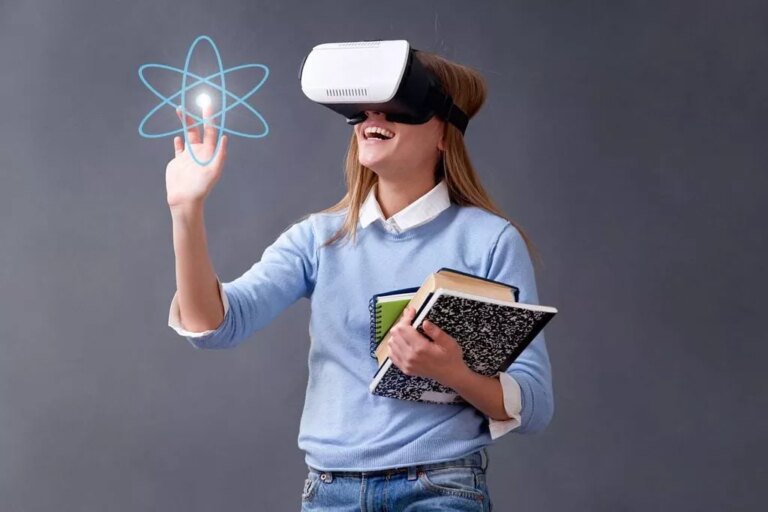How Is Edge Computing Revolutionizing Mobile Experiences?
This could potentially open the door to new forms of computing, for which immediacy is key. One oft-touted example is a “smart city,” in which the local government can collect information on things like utility usage and road traffic patterns in real time and, subsequently, take swift action. People worked in vast cubicle farms, toiling under the harsh glare of halogen light. It made sense for their data and business-critical applications to be located nearby. Businesses would shove servers into well-ventilated rooms on the premises, or they’d rent space in a local data center.
- The explosive growth and increasing computing power of IoT devices has resulted in unprecedented volumes of data.
- In health care, it can be a high-end surgical system that provides doctors with the ability to perform surgery from remote locations.
- Edge gateways serve as the connection between edge devices and cloud and/or on-premises data centers.
- Edge computing in upstream use cases focuses on distinguishing between these three types of data sources, then only transmitting critical information to the data center.
- The traditional computing paradigm built on a centralized data center and everyday internet isn’t well suited to moving endlessly growing rivers of real-world data.
- IoT benefits from having compute power closer to where a physical device or data source actually exists.
IoT benefits from having compute power closer to where a physical device or data source actually exists. In order for the data produced by IoT devices to react faster or mitigate issues, it needs to be analyzed at the edge, rather than traveling back to a central site before that analysis can take place. An IoT device is a physical object that has been connected to the internet and is the source of the data. Very advanced edge networks provide additional highly sophisticated capabilities such as dynamic data processing and distribution, as well as running applications and algorithms on the edge. Edge computing occurs when intelligent devices, AKA smart devices, gather data on the scene through the use of sensors and other data-gathering instruments and process the data via analytics on the device or a nearby gateway. The resulting outputs can be used to trigger an automated action onsite or sent to the cloud for storage, additional analysis, or to an app for visualization and dashboard reads – or even all three.
Services
AWS IOT Core and AWS Greengrass, Nebbiolo Technologies have developed Fog Node and Fog OS, Vapor IO has OpenDCRE using which one can control and monitor the data centers. Edge computing is a priority for many telco service providers as they modernize their networks and seek new sources of revenue. Edge architecture is a distributed computing architecture that encompasses all the components active in edge computing.
An IT edge is where end devices connect to a network to deliver data and receive instructions from a central server, either a data center or the cloud. While this model worked in the past, modern devices generate so much data that companies require expensive equipment to maintain optimal performance. Edge computing is running workloads at the edge—that is, closer to devices and end users. On the other hand, cloud computing is a broad term that includes running all types of workloads in a cloud service provider’s data center. Autonomous vehicles like self-driving cars are fitted with several IoT sensors that collect large amounts of data every second.
Open source
Different people may stress equipment differently over time, and breakdowns are an expected part of operations. They reside in homes and offices, atop buildings and other structures, out in the frozen tundra, in the depths of jungles, around swamps and farmlands, and even in space. Simplilearn is one of the world’s leading providers of online training for Digital Marketing, Cloud Computing, Project Management, Data Science, IT, Software Development, and many other emerging technologies.

Edge computing also helps keep workloads up to date, ensure data privacy, and adhere to data protection laws such as HIPAA, GDPR, and PCI. This processing model also enables further innovations with artificial intelligence and machine learning. One current limitation to quantum computing is the accuracy of the computed results – if you’re looking for, say, new healthcare drug designs, it’d be an understatement to say you need the results to be correct, replicable, and demonstrable. But qubits are sensitive and finicky to external stressors such as temperature, magnetism, vibrations, fundamental particle collisions, and other elements, which can introduce errors into the computation or collapse entangled states entirely.
What Is Hamming Code, the Network Technique to Detect Errors and Correct Data
Edge computing takes place at or near the physical location of either the user or the source of the data. “Put another way, edge computing brings the data and the compute closest to the point of interaction.” To sum it up, edge computing means bringing applications and data storage closer to where the people who use them are located. For large corporations, this could include a purpose-built server facility within close proximity to their main offices.
As edge computing distributes processing and storage, systems are less prone to disruptions and downtime. Device edge is the physical location of where edge devices run on-premises (cameras, sensors, industrial machines, etc.). Examples include live video streaming in media and entertainment, online gaming, or virtual reality video feeds. Edge computing for downstream use cases focus on reducing network latency so users experience events as they take place. Edge computing is becoming more popular because it allows enterprises to collect and analyze their raw data more efficiently.
Examples of Edge Computing
This is where it is closest to users and devices and most critically, as close as possible to data sources. Edge computing has also given way to fog computing, which will likely grow in equal steps. Like the edge, fog computing moves the workload closer to the network edge, reducing data travel, latency and bandwidth. Whereas edge computing moves the process to devices, though, fog computing happens across one or more nodes in a network. Gartner predicts that the traditional data center will be dead by 2025, with 80 percent of data centers shutting down in favor of infrastructures better able to deliver services closer to the consumer. That is driven by workload placement, which edge computing is equipped to address.

The reality of qubits being much more prone to external interference than transistors is one of the roadblocks on the road to quantum advantage; so a solution lies in being able to improve the accuracy of the computed results. Alexandra is a trained Agile product manager, web marketer, and digital copywriter with 10 years of experience discussing web hosting and internet jargon, iOS and Mac products, and wellness topics. She holds a master’s degree in Information Technology and is an avid user of smart home products.
That Time My Kid Googled Me and I Was No Longer “Dad”
Banks may need edge to analyze ATM video feeds in real-time in order to increase consumer safety. Mining companies can use their data to optimize their operations, improve worker safety, reduce energy consumption and increase productivity. Retailers can personalize the shopping experiences for their customers and rapidly communicate specialized offers. Companies that leverage kiosk services edge computing definition can automate the remote distribution and management of their kiosk-based applications, helping to ensure they continue to operate even when they aren’t connected or have poor network connectivity. 2019 is predicted as the year of edge technology and will remain so in the coming years. One is when IOT devices is centrally connected to cloud due to poor connectivity of devices.

We also asked other experts to chime in with their particular definitions of edge computing in clear terms to that may prove useful for IT leaders in various discussions – including those with non-technical people. However, when they do, you can expect the same seismic change that occurred when cloud computing first burst onto the scene. By bringing the computational “heavy lifting” closer to people’s phones, you unlock newer, more immersive entertainment experiences for things like virtual reality (VR), augmented reality (AR), and gaming.
The Cloud vs. The Fog vs. The Edge
Processing data nearer the source can keep costs down and speed up processing. “At Dryad, we provide ultra-early detection of wildfires using solar-powered gas sensors in a large-scale IoT mesh network placed in the forest,” Brinkschulte says. “One of the most interesting, real-world edge computing use cases that my team is currently working on is bridge inspection,” says Gretchen Stewart, chief data scientist at Intel Public Sector. “Companies with this production level need control to ensure the machines are operating as they’re supposed to, and edge computing can help manage, or at least monitor, the machine doing that process,” Andersen notes. They have sensors embedded in them using which they are continuously monitored and evaluated by Vapor Software, VEC(Vapor Edge Controller). To understand the points mentioned above, let’s take the example of a device which responds to a hot keyword.
